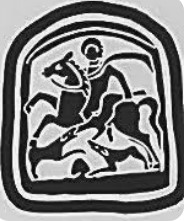RECONSTITUIREA ECOTIPURILOR RASIALE DE ANIMALE EXPLOATATE ÎN FORTIFICAŢIA HALLSTATTIANĂ DE LA TELEAC (JUDEŢUL ALBA)
RECONSTRUCTING OF THE RACIAL ECO-TYPES OF ANIMALS EXPLOITED IN THE HALLSTATTIAN FORTIFICATION AT TELEAC (ALBA COUNTY)
Author(s): Georgeta El SusiSubject(s): Archaeology, Cultural history, Regional Geography, Historical Geography
Published by: Editura Mega Print SRL
Keywords: Teleac; Hallstattian settlement; Gáva culture; faunistic remains; corporal parameters;
Summary/Abstract: The article presents the results of the morpho‑dimensional analysis of the species of domestic mamales inside the Hallstattian settlement (Gáva culture) at Teleac. In the case of bovines and little ruminants the metric data are numerous, a large part of the remains coming from specimens with finished corporal growing; but they are deficitary in the case of Suina as the large part of their samples came from young and subadult animals. Generally speaking, the bovine population exploited at Teleac stays on a large value heterogeinity dominated by the small and average values. The corporal conformation is not too robust too. For the withers high, we estimated a variation of 104.5–114.6 cm for the female animals, of 110.14–134.31 cm for male ones, and 121.6–124.12 cm for the castrated specimens. The exploited bovines in the low Banat during the early Hallstatt era are not significantly different from those exploited in Transylvania, in what concerns the corporal parameters. For the sheep conformation at Teleac and other chronological similar sites, it is a gracile one, much smaller if related to the Bronze Age. The size of the remains discovered at Teleac was estimated to 53.1–65.04 cm, with an average size of 57.3 cm. It seems that the ovine specimens in Gáva and Basarabi sites were small, with a gracile corporal conformation. The whiters high varies between 63.8 and 66.7 cm, with an average size of 65 cm. The Suina exploited in the Hallstattian communities seem as massive as the ones in the Bonze Age, with no tendency to diminish the corporal parameters. There were identified horses with the withers high of 139.73 cm, 141.57 cm, and 138.31 cm, and indices of gracility of 14.85 (semi‑gracile), 13.7 (gracile), and 10.98 (gracile). The three bodies were relative high, with semi‑thin and thin extremities, closer to riding horses. For the Canidae, the withers high was estimated to 47.75–55.76 cm (average = 50.4 cm), signifying animals of sub‑mid and mid size. The dental analysis suggests massive dentition even the size of those animals did not exceed 55 cm. It was probably a local type, well adapted for shielding and hunting. They presume that the Canidae from the first Iron Age in Romania were of mid or sub‑mid sizes, with few big individuals as those indentified in the Dacian Age.
Journal: BANATICA
- Issue Year: 1/2023
- Issue No: 33
- Page Range: 57-86
- Page Count: 30
- Language: Romanian

